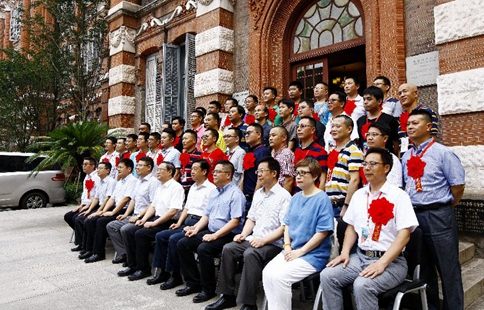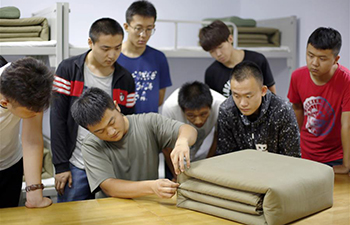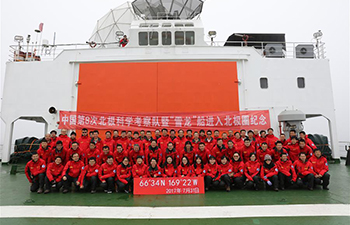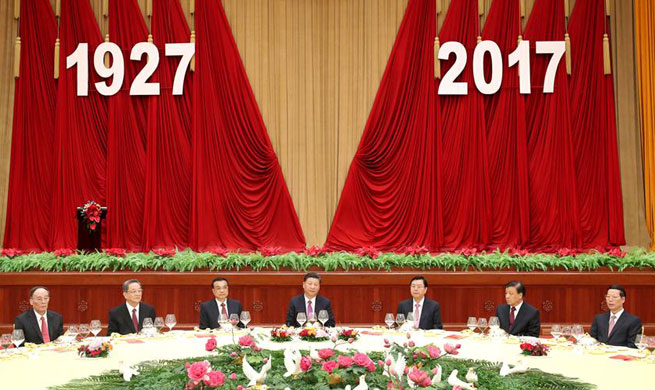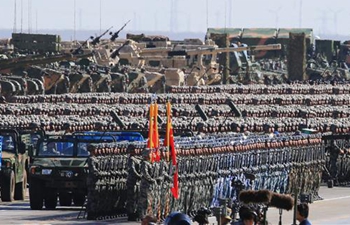SEOUL, Aug. 1 (Xinhua) -- South Korea's headline inflation posted 2.2 percent last month as heavy rain and heat wave raised prices for fruit and vegetable, a government report showed Tuesday.
Consumer prices increased 2.2 percent in July from a year earlier, according to Statistics Korea. The consumer price inflation, which stayed below 2 percent last year, hovered around 2 percent this year.
The consumer price inflation posted 2 percent in January, 1.9 percent in February, 2.2 percent in March, 1.9 percent in April, 2 percent in May and 1.9 percent in June respectively.
The high level of inflation put more pressures on the Bank of Korea (BOK) to hike its benchmark interest rate. The BOK lowered its policy rate from 3.25 percent in July 2012 to an all-time low of 1.25 percent in June last year.
Household debts maintained a record-breaking momentum amid the record-low borrowing costs, while inflationary pressure from the demand side got strong amid the recovering exports.
The central bank recently submitted a monetary policy report to the National Assembly, indicating the need for less accommodative monetary policy. The bank said the less accommodative policy stance is different from a tightened monetary policy.
Vegetable prices jumped 10.1 percent last month, leading to a 9.8 percent hike in agricultural product prices. It was attributed to the sweltering heat and the rainy season that rattled supply of vegetable and fruit.
Higher agricultural product prices raised the overall headline inflation by 0.67 percentage points in July.
Prices for livestock and fishery products advanced 8.1 percent and 5.7 percent each, lifting the headline inflation by 0.28 percentage points.
Egg prices soared 64.8 percent, with those for squid, potato and amber logging a double-digit increase.
Prices for electricity, tap water and gas jumped 8 percent in July as the government temporarily lowered electricity charges a year earlier. It raised the overall inflation by 0.29 percentage points.
Oil product prices, which showed a big increase earlier this year, inched up 0.5 percent in July from a year ago as global crude oil weakened recently.
Core consumer prices, which exclude volatile agricultural and oil products, rose 1.8 percent last month. The OECD-method core prices, which exclude energy and food costs, gained 1.5 percent.
Services prices advanced 1.9 percent as the summer vacation season kicked off in late July.
The so-called livelihood prices, which reflect costs for daily necessities, climbed 3.1 percent in July, posting the fastest since January 2012.
The fresh food price index, which reflects prices for fresh vegetable and fruit, advanced 12.3 percent last month on the supply shortage caused by heavy rain and heat wave. It marked the highest increase since November last year.





